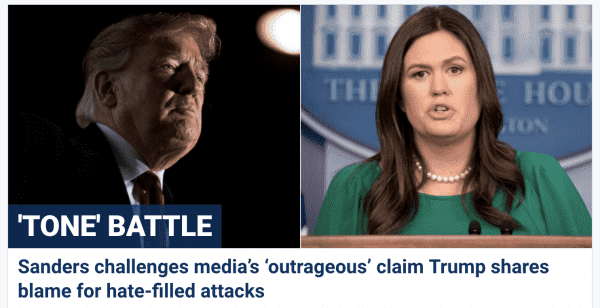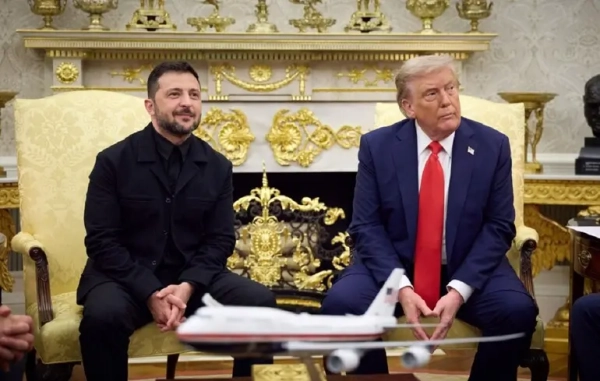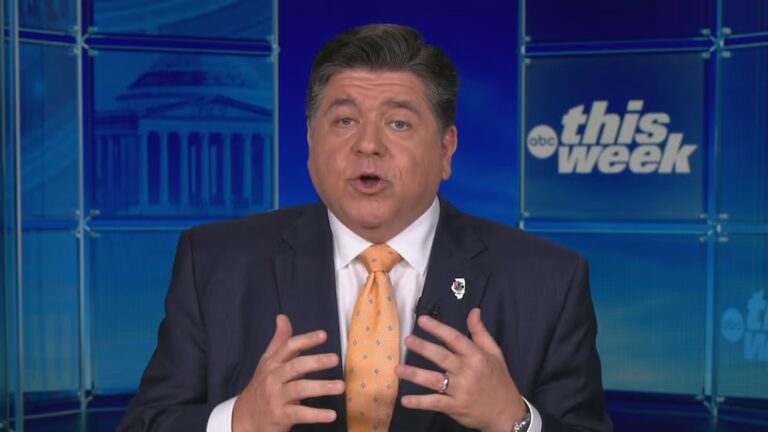
On September 13, danah boyd took the stage at the Online News Association’s annual conference in Austin. She is the founder and president of Data and Society, a research institute dedicated to “the thorny issues at the intersection of technology and society.” The topic she had come to address, and the audience before which she had chosen to address it, was among the thorniest. boyd was in Austin to tell the media they were getting played.
“I’m hoping that you can hear what I’m saying,” she told the assembled journalists. “Because our democracy depends on you recognizing that you are being manipulated.”
The manipulators boyd was talking about were mostly alt-right and alt-light trolls, conspiracy theorists, and provocateurs. They would do or say something offensive or outrageous, bathe in the flood of negative publicity, and use the media’s coverage — particularly its storm of outraged, fact-checking, oppositional coverage — to whip up their base, generate interest in their ideas, and stoke the belief that the MSM was against them.
boyd was warning the journalists that the strategies of modern media manipulators were different — they had learned to thrive on negative coverage, and had discovered they could popularize ideas and recruit sympathizers by provoking the media into trying to discredit their noxious ideas.
“Their goal is to get the news media to negate [their] frame — and negate the conspirators who are propagating that frame,” she warned. For some people, having the media turn en masse to say something is vicious and untrue makes them think: Huh, I wonder if that’s true. I wonder what they’re trying to hide?
The approach had become predictable, but the media seemed unable or unwilling to stop falling for it, boyd said. She even laid it out in a clean, bulleted list:
boyd suggested there was a simple way to shut down the manipulations of these trolls. “Ignore their attention games and focus your reporting on the wide range of non-hateful political views in this country that aren’t screaming loudly to get your attention,” she advised.
I’ve been thinking a lot about boyd’s speech lately, but the particular media manipulator who has me thinking about it presents unique problems, and the dynamics surrounding him defy her solutions.
I’m talking, of course, about the president of the United States.
Trump knows exactly how to get the media’s attention
Last week, law enforcement apprehended a pro-Trump obsessive who was mailing bombs to the president’s political opponents. Over the weekend, an anti-Semite entered a synagogue in Philadelphia and murdered 11 Jewish worshippers on the grounds that Jews were behind the caravan of migrants that Trump keeps hyping as an existential threat to American safety.
On Monday morning, Trump logged on to Twitter to change the subject:
It’s easy to read Trump’s tweets, with their quasi-random capitalization, and miss the care with which they’re crafted. But there’s a phrase in this one that Trump knows elicits more media outrage than any other: “the true Enemy of the People.” The media doesn’t much care when the president calls them fake news anymore. But calling them the enemy of the people mere days after a mentally imbalanced MAGA obsessive sent them bombs in the mail? The media isn’t going to ignore that. And Trump knew it.
But this wasn’t just a morning missive from Trump. This was a coordinated message from his White House.
On Monday afternoon, press secretary Sarah Sanders held her first press briefing since October 3rd to reiterate Trump’s sentiments. The rare briefing was held for one reason, and one reason only: Sanders wanted an on-camera confrontation with the media, and she got it.
As the briefing wrapped up, Sanders delivered the message she wanted the country to hear. “You guys have a huge responsibility to play in the divisive nature of this country, when 90 percent of the coverage of everything this president does is negative, despite the fact that the country is doing extremely well, despite the fact that the president is delivering on exactly what he said he was going to do if elected,” she said. “And he got elected by an overwhelming majority of 63 million Americans who came out and supported him, and wanted to see his policies enacted.”
It was a perfect statement. It combined an outrageously timed attack on the media with a complaint that Trump just can’t get fair coverage and wrapped it in the kind of easily proven lie the press can’t resist covering (far from being elected by an “overwhelming majority,” Trump lost the popular vote).
Hours later, this was the Fox News homepage:

Trump needs an enemy, and his enemy is the media
Days after Trump’s inauguration, then-chief strategist Steve Bannon gave an interview to the New York Times.
“I want you to quote this,” Bannon said. “The media here is the opposition party.”
Just in case his point was missed, he said it again. “You’re the opposition party. Not the Democratic Party. You’re the opposition party. The media’s the opposition party.”
Trump has always treated his presidency as a reality show, and every good reality show needs a villain. From day one, Trump wanted his villain to be the media. With Democrats basically powerless, the media was the only force powerful enough to make continuing sense of Trump’s aggrieved, oppositional political style.
The problem was the media didn’t want to be Trump’s opposition party. The media wanted to cover his presidency. Early on, the media wanted more than anything else to normalize his presidency, and their coverage of it; there was a constant hunt for the moments when Trump appeared presidential or seemed to be changing his behavior to better match the burdens of his office.
Trump’s solution to that problem has been to provoke the media into looking like his opposition by lying in more absurd ways and directly attacking them in more outrageous ways at more and more outrageous times. Remember, for instance, “The FAKE NEWS awards,” which Trump hyped on Twitter for weeks?
Trump leverages the trollish formulas boyd outlined to perfection: He uses Twitter to create spectacle on social media, deploys catchy and unusual frames (“FAKE NEWS!” “the true Enemy of the People”) that sympathizers can search for to find supporting evidence or fellow loyalists, and then uses the media’s aggrieved or simply truth-telling reaction to paints himself as a victim of endless media bias (“90 percent of the coverage of everything this president does is negative”).
The media then reacts in the only way that makes any sense given the situation: We cover Trump’s statements as outrageous and aberrant; we make clear where he’s lied or given succor to violent paranoiacs; we fret over the future of the free press. And then Trump and his loyalists point to our overwhelmingly negative coverage and say, “See? Told you they were the opposition party.”
Trump, in other words, manipulates the media using the same tactics as a run-of-the-mill alt-right troll, and for much the same reason: He wants the media to fight with him so he gets more coverage and shows how biased they are against him. He wants the media to fight him because that drives attention to the things he’s saying, to the conspiracies he’s popularizing, and to himself. Going to war with the media nets Trump much more coverage than giving a speech on manufacturing policy or tax cuts.
The problem is Donald Trump isn’t your run-of-the-mill troll. He’s the president of the United States of America.
The media’s lose-lose situation
In her important report on the way trolls manipulate the media into amplifying their messages, communications scholar Whitney Phillips summed up the media’s lose-lose choice well. “It is problematic enough when everyday citizens help spread false, malicious, or manipulative information across social media,” she writes. “It is infinitely more problematic when journalists, whose work can reach millions, do the same. At least, it can be infinitely more problematic. It can also be a critical contribution to public discourse.”
Phillips was talking about the difficult questions involved in covering online neo-Nazis and alt-right provocateurs, but the bind applies with vastly more force to Trump himself. Constantly covering Trump’s endless attacks on the press, his lies, his violations of basic decency and norms, crowds out coverage of arguably more consequential questions, like his baldfaced lying about the GOP’s health care plan or the specifics of Democrats’ agenda if they retake Congress.
But covering a US president’s proto-fascist language about the free press is also a critical contribution to public discourse. The term “newsworthy” may be abused and opaque, but that’s newsworthy under any definition.
What do you do, though, when coverage of that proto-fascist language is actually the point of the language in the first place? Trump wants to bait the media into looking like his opposition. He wants us to make the dominant and constant topic of political conversation his war with, well, us.
As press critic Jay Rosen put it, the media has no idea what to cover when “the erosion of democratic institutions — not just the press, but all of them — is part of how the political movement [the president] leads is powered.”
The media used to have a stick here: negative coverage. Sure, you could get us to cover you by being outrageous or offensive, but you wouldn’t want that kind of coverage. That kind of coverage could destroy your career.
But Trump does want that kind of coverage. That kind of coverage is how he built his political career. That kind of coverage is how he shows that we’re his opposition, that he’s an underdog at war with the Washington “deep state.” Even better, that kind of coverage lets him crowd out the kind of coverage he really doesn’t want — coverage of his actual agenda, which trends toward plutocracy rather than populism; of other politicians, who have ideas and messages that could threaten Trump’s presidency if only they could get heard.
“Journalists have become more savvy in how they deal with lower-level trolls,” Phillips told me by phone. “They figured out how to not engage with them on Twitter. But no one has quite figured out what to do when the president is engaging in similar behaviors. You can’t just ignore him, can you?” Then I heard her tone change. “That’s a genuine question. Can we ignore him? Does it make sense? Is it ethical to look at something the president of the United States says and decide we won’t report that?”
Nor is it obvious that if the mainstream media ignored Trump’s provocations, stunts, and obsessions in favor of focusing on more substantive parts of his agenda, it would much matter. Trump has his own communication channels. This is a point Sanders has made defending her decision to rarely hold press briefings (a decision she defended, naturally, on Fox News). “The day that the briefing was initially created, the atmosphere was incredibly different and you didn’t have the same access and ways to communicate with the American public,” she said.
Social media and propagandistic outlets like Fox News let Trump drive the story before any independent editorial judgment comes into play. Mainstream publications that ignore the controversies he creates would make themselves look like the opposition in a totally different way, and would likely lose market share to outlets that swarmed around Trump’s provocations and reaped the social and search traffic that came with it.
Trump often winks at this relationship he has with the media, the way his attacks are good politics for him and good business for us. In December, he told the New York Times:
This is the part of the piece where I’m supposed to offer solutions, I think. But I don’t have good ones. I think media outlets need to develop a clearer rubric for newsworthiness as a way of making coverage decisions less reactive to Trump tweets. At Vox, for instance, we weight policy stories more heavily, which gives a different mix to our news, but of course, we cover Trump’s tweets and provocations as well — hell, this whole piece is, in a sense, me covering Trump’s tweets and provocations.
“You can starve lower-level manipulators of oxygen,” says Phillips. “How do you starve the president of oxygen? He creates his own oxygen.”
The first step to solving a problem is admitting you have one. And we have one. Trump has shown you can build a whole presidency around provocation. He has shown that you can always manipulate the media into swarming you with negative coverage and looking like your enemy, and then you can run against the media at the same time you’re discrediting it to your followers. He has shown that you can shut down your competitors, challengers, and opponents by being so outrageous that you simply deny them the oxygen of media coverage.
This strategy is dangerous for the country, but it’s worked for Trump, and it could work for others if nothing changes. “He has established a coherent behavioral template for others to borrow from,” says Phillips. “When something is done and it succeeds, it sends a message to anyone who might want to take a similar behavior down the road that they should press those exact same buttons.”
Correction: I initially said this was Sanders’s first press briefing since September 10th. As best I can figure out, it was her first solo press briefing since 9/10, but on October 3rd, she hosted a briefing with a number of other members of the White House staff, so I’ve corrected the text.
Sourse: vox.com






